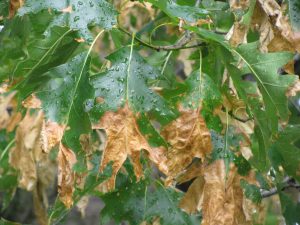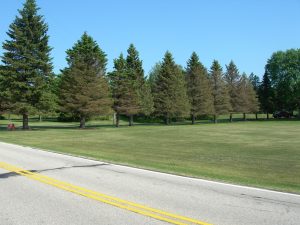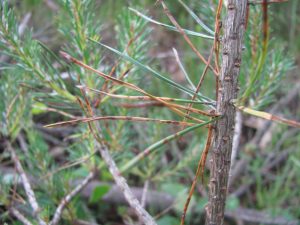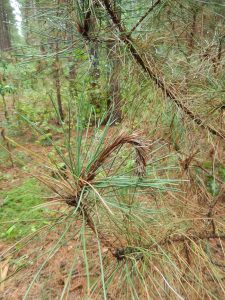Many areas of Wisconsin have had abundant rainfall and prolonged cool temperatures this spring which often leads to leaf and needle diseases. The fungal leaf disease anthracnose is the most common issue we see on hardwoods.

Anthracnose on ash leaves. Photo by Mike Hillstrom.

Anthracnose on oak leaves. Photo by Mike Hillstrom.
Symptoms appear as patches of brown, dead leaf tissue which may cause leaves to curl or shrivel up as damage progresses. Anthracnose is common on maples, oaks and other hardwood species but the effects are often most dramatic on ash. Ash infected early in the spring often drop the infected leaves, making the trees looking very thin-crowned. Frost damage can contribute to this early leaf drop as well. No need to worry, the trees will send out new leaves as needed. Lots of other leaf diseases can affect hardwoods but the symptoms often look worse than they actually are and the trees recover by early summer.

Spruce impacted by rhizosphaera needlecast. Photo by Mark Guthmiller.
Conifers also experience an array of needle diseases because of wet spring weather. The most common issue reported is rhizosphaera needlecast of spruce. Blue spruces are especially susceptible to this fungal disease because they are not native to Wisconsin. Symptoms often start on the lowest branches and progress upwards slowly, killing the branches over several years. Management of rhizosphaera includes pruning lower branches to increase air circulation, pruning infected branches, removing infected needles from under the tree, or treating infected trees with a fungicide. More information is available from UW-Extension.
Numerous other needle diseases impact conifers and some can be serious, so contact your local forest health specialist (for forest trees) or UW-Extension office (for yard trees) if you need help diagnosing the problem. Yard tree samples can be mailed to the University of Wisconsin Plant Disease Diagnostic Clinic for testing. The Wisconsin Arborist Association website lists certified arborists available to diagnose or treat yard trees.

Scots pine needles infected with brown spot needle blight Photo by Mike Hillstrom.

Red pine showing the typical shepard’s crook tip caused by the fungus Diplodia. Photo by Linda Williams.
Written by: Mike Hillstrom, forest health specialist, Wisconsin Dells (Michael.Hillstrom@Wisconsin.gov), 715-459-1371 with contributions from Linda Williams and Todd Lanigan.
